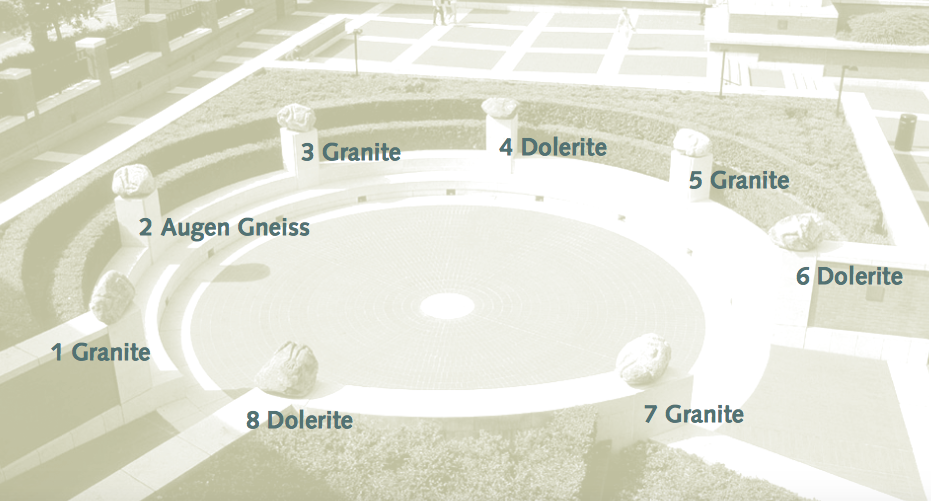This sculpture, 'Planets' by Antony Gormley, outside the British Library is a collection of glacial erratics from Malmo, Sweden. Geologists identify erratics by studying the rocks surrounding the position of the erratic and the composition of the erratic itself.
Erratics are significant because:
- Since they are transported by glaciers, they are one of a series of indicators which mark the path of prehistoric glacier movement. Their lithographic origin can be traced to the parent bedrock, allowing for confirmation of the ice flow route.
- They can be transported by ice rafting. This allows quantification of the extent of glacial flooding resulting from ice dam failure which release the waters stored in proglacial lakes such as Lake Missoula. Erratics released by ice-rafts that were stranded and subsequently melt, dropping their load, allow characterization of the high-water marks for transient floods in areas like temporary Lake Lewis.
- Erratics dropped by icebergs melting in the ocean can be used to track Antarctic and Arctic-region glacial movements for periods prior to record retention. Also known as dropstones, these can be correlated with ocean temperatures and levels to better understand and calibrate models of the glacial climate.
The 'Planets' are igneous rocks, those which originated from a fiery molten state (igne is fire in Latin). The inside of the Earth is very hot - hot enough to melt rocks. Molten (liquid) rock forms when rocks melt. The molten rock is called magma. When the magma cools and solidifies, a type of rock called igneous rock forms. Igneous rocks contain randomly arranged interlocking crystals. The size of the crystals depends on how quickly the molten magma solidified. The more slowly the magma cools, the bigger the crystals.

Five of the stones are granite (numbers 1, 2, 3, 5 and 7); these are paler and generally pink or reddish in tone with a texture speckled with visible crystals. The second boulder in the series is rather special – a closer inspection reveals a knotted texture in which a large crystal is overlapped by flatter, platy ones which wrap around to make a distinct ‘eye’ pattern. This is a granite which was later reheated and squeezed (metamorphosed) as the Scandinavian mountains were formed. It is referred to as a gneiss, and because of the eye pattern, it is known as augen gneiss (augen from the German for eyes).
The other granites are more orthodox.
The darker coloured stones (numbers 4, 6 and 8) are a category of rock which was introduced into the crust from deep volcanic sources, melting its way into strata as distinct sheets called sills. The molten rock was chilled in the process and so the minerals failed to grow to a size easily visible to the naked eye before the rock solidified. They are poor in the white mineral quartz, hence the darker overall colour compared with the granites which are rich in this mineral dolerite and, if the crystals are particularly small, basalt. Their rusty-brown surface crust, acquired as they were weathered and transported, allowed the sculptor to create his figures in outline by chiselling through the crust to reveal the black body colour.
Your tasks
To log this cache, you will need to complete the tasks below. You can use information from the cache page and your observations at GZ to do this. Please message us with the info (rather than post it on your log). You can log a find once we have been sent a message; there is no need to wait for a reply. We may delete your log if your answer is way off the mark.
- Examine the erratics and describe how the crystals formed.
- Why do you think that erratics are important to geologists?
- As an optional extra, post a picture of yourself and / or your GPSr at the the erratic that is an Augen Gneiss and take a picture of your GPSr by the 'eye'. See cache page info for help in identifying the correct one.